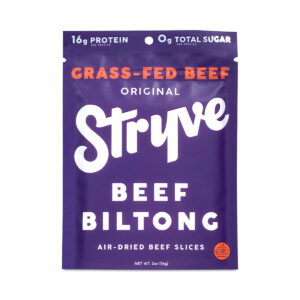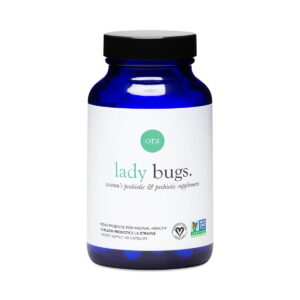- Understanding Organic Labeling
- Choosing Fresh Produce
- Checking for Certification
- Storing Organic Ingredients Safely
- Tips for Reducing Contamination
- Maintaining a Clean Kitchen Environment
When navigating the realm of grocery shopping, understanding organic labeling is crucial for making informed decisions about your food. In today’s market, organic labels can be found on a variety of products, from fruits and vegetables to meat and dairy. However, not all organic products are created equal, which makes it important to decode what these labels really mean.
When you see the term ‘100% Organic’, this signifies that the product contains only organic ingredients, produced without the use of synthetic fertilizers, pesticides, or genetically modified organisms (GMOs). This label also ensures that the agricultural practices used in the production meet rigorous standards set by the USDA. Products labeled as ‘Organic’ contain at least 95% organic ingredients, while those labeled ‘Made with Organic Ingredients’ must contain at least 70% organic ingredients. Items with less than 70% organic ingredients cannot be marketed as organic, though they can list individual organic ingredients on the label.
In addition, it’s vital to check for any third-party certifications as they can enhance the credibility of the organic label. Look for seals from organizations such as Oregon Tilth or the Non-GMO Project, as they indicate a commitment to organic practices and environmental responsibility. This is especially relevant for families, fitness enthusiasts, and vegans who seek to reduce exposure to harmful substances and support sustainable practices.
As you shop, consider local options as well. Many local farmers’ markets offer organic produce that meets rigorous standards, often at a lower cost than grocery stores. Plus, purchasing locally not only supports your community but also ensures that you’re getting fresher products, which can significantly enhance your meals.
Another tip when shopping for organic products—both online and in-store—is to be wary of prices that seem too good to be true. Organic products typically come with a higher price tag due to the growing practices involved. So, if you see organic items priced significantly lower than other options, it’s worth investigating further.
For vegan consumers, verify that the organic product is free from animal-derived ingredients. Many brands are starting to offer a wider variety of vegan organic products, so don’t hesitate to explore plant-based options when checking organic labels.
If you choose to shop online, ensure the website is reputable and check for product reviews. Also, be cautious when purchasing bulk organic items; ensure they have a clear organic certification and are delivered in tamper-evident packaging to maintain safety standards.
- Always look for clear certification logos on products.
- Consider shopping at local farmers’ markets for organic options.
- Verify that online retailers are reputable and read reviews.
- Be cautious of unusually low prices for organic goods.
By equipping yourself with knowledge about organic labeling, you can confidently select products that align with your dietary needs while supporting sustainable practices. Always prioritize high-quality ingredients, and if possible, connect with local farmers or community-supported agriculture (CSA) programs to keep your shopping both healthy and economical.
Choosing Fresh Produce
When it comes to selecting fresh organic produce, several factors contribute to ensuring you choose the best quality items available. Recognizing how to assess freshness can significantly impact the taste and nutritional value of your meals.
Begin by inspecting the appearance of the produce. Fresh fruits and vegetables should be vibrant in color, reflecting their ripeness and nutrient content. Look for items that are free from blemishes, soft spots, or signs of mold. For instance, crisp green leaves on vegetables indicate they were recently harvested, while dull or yellowed leaves suggest they may be past their prime. For tomatoes, a rich red color without dark areas or cracks signals optimal freshness.
Next, consider the texture. Fresh organic produce should have a firm feel when gently squeezed. For example, a ripe avocado will yield slightly under pressure, while a rock-hard one indicates immaturity. For leafy greens like spinach, ensure they are crunchy rather than limp, as this is a sign they have just been picked.
Another critical element to consider is the smell. Fresh produce often has a pleasant, earthy aroma, while items that are starting to spoil may emit a sour or off smell. Heed this sensory evaluation when shopping; it can guide you to select the freshest offerings.
To assist in your decision-making process, here’s a table comparing different types of produce and the cues for freshness to look out for:
| Produce Type | Freshness Indicators |
|---|---|
| Leafy Greens (e.g., spinach, kale) | Bright color; crunchy texture; no wilting or browning. |
| Fruits (e.g., apples, bananas) | Smooth skin; no bruises; fragrant smell; firm with slight give when pressed. |
| Root Vegetables (e.g., carrots, potatoes) | Firm; no soft spots or sprouts; clean skin. |
| Tomatoes | Rich color; firm texture; no cracks or blemishes; pleasant aroma. |
| Berries (e.g., strawberries, blueberries) | Vibrant color; no mold; firm; should not be overly soft or mushy. |
In addition to visual and tactile cues, consider the seasonal availability of produce, as items that are out of season may have traveled long distances, significantly impacting their freshness and flavor. Take some time to familiarize yourself with what’s in season in your area, and prioritize these options when shopping.
Finally, when shopping at farmers’ markets or local producers, don’t hesitate to ask questions. Inquire about when the produce was harvested and how it was grown. Farmers often appreciate educating consumers about their practices, and gathering this information can enhance your understanding of food sourcing.
By paying attention to the cues for freshness, you will improve the quality of the organic ingredients in your meals, allowing you to enjoy not only tastier dishes but also gain the full nutritional benefits that fresh produce provides.
Checking for Certification

When assessing organic products, understanding certification can greatly impact your shopping experience and the nutritional quality of the foods you bring home. The most common certification to look for is the USDA Organic seal, which signifies that the product meets strict guidelines and has been verified through a rigorous inspection process. However, it’s equally important to make sure you recognize other certifications that align with your health and ethical standards.
For example, if you’re shopping for meat or dairy, a product that is labeled as ‘Animal Welfare Approved’ not only meets organic standards but also ensures that the animals are raised in humane conditions. For those following a vegan lifestyle, seek out products that are certified vegan alongside their organic labeling to guarantee no animal-derived inputs were used.
Additionally, keep an eye out for certifications like the Non-GMO Project Verified label. This is particularly relevant for those concerned about genetically modified organisms in their diets. Even though organic standards prohibit GMO ingredients, cross-contamination can occur, especially in grains, so this additional verification can provide peace of mind.
While shopping online, it’s essential to be alert and ensure that the online grocery store features transparent information about their certifications. Reputable retailers will prominently display organic product certifications on the product page, helping you make informed decisions without the need to inspect the packaging in person. Furthermore, when purchasing from online sources, check for customer feedback regarding product authenticity to avoid fraudulent claims.
For your budget-friendly organic shopping trips, remember that seasonal buying can also enhance the value of your purchases. Many organic items like fruits and vegetables fluctuate in price based on seasonality; consider buying in bulk during peak seasons, which is often when they are the cheapest. For instance, purchasing organic strawberries during their peak season in the spring can save you money while providing deliciously fresh fruit for your smoothies or healthy snacks.
Moreover, many local grocery stores and online retailers host sales or loyalty programs focused on organic products. Signing up for newsletters from your favorite grocery stores can keep you updated on sales or discounts that can make your organic shopping more affordable.
Lastly, when you’re close to purchasing organic items, familiarize yourself with the concept of “clean fifteen” versus “dirty dozen.” The Environmental Working Group publishes an annual list of produce with the highest pesticide residues and those that are safer when not organic. This can help guide your decisions on which items are worth splurging on organic versions and which can be safely purchased conventionally.
- Check for USDA Organic seal and other relevant certifications.
- Look for animal welfare certifications for meat and dairy.
- Seek out the Non-GMO Project Verified label for added safety.
- Shop online from reputable retailers that display certification information.
- Buy seasonal organic produce in bulk for cost savings.
With these strategies in mind, you can confidently navigate the world of organic grocery shopping, ensuring that every purchase supports your family’s health, budget, and ethical standards.
Storing Organic Ingredients Safely
When it comes to storing organic ingredients safely, understanding the appropriate methods can help maintain their freshness and nutritional value. Proper storage practices play a crucial role in preserving the quality of your food, reducing waste, and ensuring you and your family are consuming safe ingredients.
For fresh fruits and vegetables, it’s important to store them according to their specific needs. While some items, like apples and bananas, emit ethylene gas which can speed up ripening, others may benefit from cooler temperatures. Most leafy greens and berries should be kept in the refrigerator. Place leafy greens in a breathable storage bag or wrapped in a damp paper towel to maintain humidity, ensuring they stay crisp longer. Berries are best stored in their original container or in a shallow bowl lined with paper towels to absorb moisture, minimizing the risk of mold.
Root vegetables, such as carrots and potatoes, should ideally be stored in a cool, dark place, such as a pantry or cellar, to avoid sprouting and spoilage. Ensure they are kept away from direct sunlight and moisture to maintain their crispness. On the other hand, items like tomatoes should be stored at room temperature to allow them to ripen properly, but once fully ripe, they should be consumed promptly or moved to the refrigerator if necessary.
For dry pantry items, such as grains, legumes, and nuts, choose airtight containers to prevent exposure to air and moisture, which can lead to spoilage. Glass jars, BPA-free plastic containers, or vacuum-sealed bags are ideal options. Keep these stored in a cool, dark place, as heat and light can degrade their quality over time.
When it comes to storing perishable organic items, such as dairy products or eggs, always adhere to the expiration dates indicated on the packaging. Store dairy in the main section of the refrigerator rather than the door to maintain a consistent temperature. If you purchase organic eggs, keep them in their original carton in the coldest part of the fridge to prolong freshness.
For leftover meals or cooked organic ingredients, promptly refrigerate or freeze portions in airtight containers. Always allow food to cool before sealing to minimize condensation inside the container, which can lead to spoilage. Labeling containers with the contents and date can help you keep track of what you have available and ensure you use ingredients before they go bad.
Another crucial aspect of storing organic products is understanding the importance of separation. Keep raw meats, seafood, and eggs away from ready-to-eat foods to prevent cross-contamination. Always use separate cutting boards and utensils for raw ingredients to maintain food safety standards.
“By failing to prepare, you are preparing to fail.” – Benjamin Franklin
In summary, by paying attention to the proper storage techniques for various organic ingredients, you enhance not only their shelf life but also their taste and nutritional benefits. Implementing these practices will not only improve your culinary creations but also contribute to a healthier household by minimizing food waste and maximizing safety in your kitchen.
Tips for Reducing Contamination
 Organic ingredients, while generally safe and beneficial, can be susceptible to contamination if not handled properly. It’s important to recognize how contamination can occur and implement strategies to mitigate it throughout your grocery shopping and cooking processes.
Organic ingredients, while generally safe and beneficial, can be susceptible to contamination if not handled properly. It’s important to recognize how contamination can occur and implement strategies to mitigate it throughout your grocery shopping and cooking processes.
One of the foremost ways to reduce contamination is to wash all fresh produce thoroughly, even those labeled as organic. Rinsing fruits and vegetables under running water helps remove dirt, bacteria, and pesticides. For hard-skinned produce like cucumbers or melons, consider using a brush to scrub the surface, as these can harbor more contaminants. Be sure to dry your produce with a clean cloth or paper towel after washing, as moisture can promote bacterial growth.
Beyond washing, be vigilant when it comes to packaging. Choose products that utilize tamper-evident seals or packaging to ensure safety and quality. For loose produce, consider bringing your reusable bags to reduce dependency on plastic while also ensuring those bags are clean before using them to prevent any cross-contamination with other items.
Moreover, when preparing food, practice good kitchen hygiene. This includes washing your hands before handling food, using separate cutting boards for raw meats and vegetables, and using clean utensils throughout the cooking process. Cross-contamination is a common source of foodborne illness, and maintaining clear boundaries between various ingredients is vital for safety.
Storing ingredients correctly is equally crucial to avoid contamination. As discussed in previous sections, always store organic ingredients in clean, airtight containers, and keep perishables in the refrigerator at appropriate temperatures. Regularly check food items for spoilage, discarding anything that shows signs of mold or an off smell.
Emphasizing the importance of temperature, be aware that bacteria thrive in a “danger zone” between 40°F and 140°F. When cooking, use a food thermometer to ensure meats reach safe internal temperatures. For leftovers, promptly refrigerate perishable items within two hours to minimize bacterial growth.
Finally, considering where you shop can also impact safety. Familiarize yourself with local grocery stores, farmers’ markets, and their practices regarding food safety. Seek out vendors who prioritize organic and safety standards, which often leads to better quality products.
To deepen your understanding of reducing contamination in organic grocery shopping, ask yourself: What steps can I implement in my own shopping habits? How can knowledge about contamination influence my choices in the kitchen? Explore various resources and educate yourself on safe food handling techniques to protect not just your health, but also the health of your loved ones.
- What steps can I take to ensure my organic produce stays fresh?
- Store organic produce in breathable bags in the fridge, keep items like tomatoes at room temperature until ripe, and wash them thoroughly before use to remove contaminants.
- Why is it essential to wash organic produce?
- Even organic produce can carry dirt, bacteria, and pesticide residues; washing helps remove these potentially harmful substances to ensure safe consumption.
- What should I do if I notice spoilage in my organic ingredients?
- Discard any items that show signs of spoilage, such as mold or an off smell, to prevent the potential spread of bacteria to other foods.
- How can cross-contamination be avoided in the kitchen?
- Use separate cutting boards for raw meats and vegetables, wash utensils in between tasks, and ensure proper handwashing before handling any food.
- Are there specific temperatures I need to keep organic ingredients at?
- Keep perishable items in the refrigerator below 40°F, and ensure cooked meats reach safe internal temperatures to prevent bacteria growth.
- How can I check if my grocery store practices good food safety?
- Look for stores with good reputations regarding the sourcing of their products, and inquire about their safety standards and practices at farmers’ markets or local stores.
- What should I do with leftovers from organic meals?
- Promptly refrigerate or freeze leftovers in airtight containers within two hours to minimize the risk of bacterial growth.
Maintaining a Clean Kitchen Environment
Maintaining a clean kitchen environment is essential for ensuring the safety and quality of the organic ingredients you bring into your home. A clean kitchen helps reduce the risk of contamination and enhances your cooking experience, allowing you to prepare delicious, healthful meals for your family.
Start by establishing a regular cleaning routine. Clean countertops, cutting boards, and utensils before and after preparing meals. Use hot, soapy water to wash surfaces and sanitize them with a solution of one tablespoon of unscented liquid chlorine bleach mixed with one gallon of water, especially when handling raw meat or poultry. This practice aids in eradicating harmful bacteria that can lead to foodborne illnesses.
When organizing your kitchen, designate specific areas for different food types. Ensure that raw meat, poultry, and seafood are stored on separate shelves in the refrigerator to prevent cross-contamination. Utilize color-coded cutting boards: one for vegetables, another for fruits, and a separate board for meats. This strategy prevents trace ingredients from one board contaminating another, maintaining the integrity of both your meals and your organic ingredients.
Investing in proper storage solutions is key. Store dry pantry items such as grains, nuts, and legumes in airtight containers to protect them from pests and moisture. Additionally, keep your refrigerator organized to make it easier to access ingredients while minimizing the time the fridge door is open, which can affect the internal temperature and spoilage rates.
For those who utilize reusable shopping bags, make sure to clean them regularly. Fabric bags can harbor bacteria or residue from groceries, so wash them as per the manufacturer’s instructions to ensure they remain hygienic for your next shopping trip.
When preparing meals, the importance of handwashing cannot be overstated. Wash your hands thoroughly with soap and water for at least 20 seconds before and after handling food, especially raw ingredients. If you use gloves, ensure they are changed between tasks to maintain cleanliness.
Another aspect of cleanliness is managing any spills or food debris on your cooking surfaces. Clean up spills immediately, particularly if they involve allergenic ingredients or raw foods. This will not only keep the kitchen tidy but also prevent slipping hazards, especially for young children helping out in the kitchen.
To ensure your kitchen remains a safe haven for meal prep, consider incorporating regular deep-cleaning sessions into your routine. Take time to clean out the refrigerator, checking for expired items or leftovers that need to be discarded. Wipe down appliances and sweep or vacuum the floors to eliminate crumbs and dirt that can attract pests.
Educational resources, such as the FDA’s Food Safety website, provide excellent guidance on maintaining a clean kitchen and safe food handling practices. Implementing these safety tips creates an environment where you can focus on cooking healthy meals while ensuring the well-being of your family.
- Regularly clean all kitchen surfaces and utensils.
- Store raw meats separately from other foods in the fridge.
- Utilize color-coded cutting boards to prevent cross-contamination.
- Wash reusable shopping bags frequently to maintain hygiene.
- Implement handwashing before and after handling food.
- Conduct deep-cleaning regularly to keep the kitchen tidy and safe.
New Customers Offer!
Free Gift for the new customer
$24 Value, When You Subscrib Visit Thrive Market












